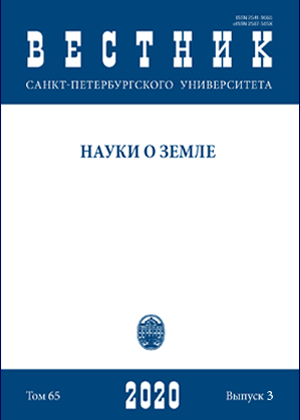Age of the coal accumulation in the Irkutsk basin based on accessory zircon dating in the Azeisk deposit tonstein (LA-ICP-MS)
DOI:
https://doi.org/10.21638/spbu07.2020.301Abstract
The Irkutsk Coal Basin is located in the south of the Siberian Platform. The deposits of the basin are represented by Jurassic continental sediments. Since the 1970s, tuffs and tuffaceous rocks have been found in sediments of the Irkutsk Coal Basin, but so far only fragmentary information has been available on them. Previously, the age of sediments in the Irkutsk Basin was determined by the biostratigraphic method. We studied a section of the Cheremkhovo Fm., the most ancient formation of the basin, at the Azeisk coal deposit (in the area of the town of Tulun) with the aim of obtaining a geochronological constraints on the timing of sedimentation. The paper shows that tonsteins, which are transformed to clay ash-fall layers within coals, are suitable for radioisotope dating by accessory zircons. U-Pb dating of accessory zircons in tonstein from an industrial coal seam was performed using the LA-ICP-MS method. The obtained U-Pb age of 187.44 +0.45 –1.60 Ma, falling into the Pliensbachian Age, indicates the period of maximum coal formation in the Irkutsk Basin. This is the first radiometric age determination for the timing of accumulation of coal in the Irkutsk Basin. In the context of paleogeographic reconstructions, this age determines the upper limit of the tectonic quiescence period, which created conditions for lacustrine-boggy sedimentation in the vast territory of the Irkutsk Basin.
Keywords:
Jurassic Period, volcanism, tonstein, Irkutsk coal-bearing basin, accessory zircons, U-Pb dating
Downloads
Downloads
Additional Files
Published
How to Cite
Issue
Section
License
Articles of "Vestnik of Saint Petersburg University. Earth Sciences" are open access distributed under the terms of the License Agreement with Saint Petersburg State University, which permits to the authors unrestricted distribution and self-archiving free of charge.






